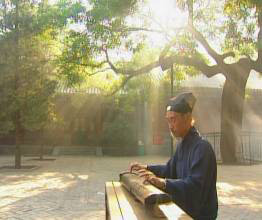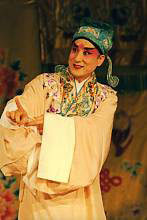Background
UNESCO's intangible cultural heritage convention
(unesco.org)
Updated: 2010-08-18 17:18
 |
Large Medium Small |
 |
|
Musician playing guqin. [Photo/Chinese Academy of Arts] |
The term 'cultural heritage' has changed content considerably in recent decades, partially owing to the instruments developed by UNESCO. Cultural heritage does not end at monuments and collections of objects. It also includes traditions or living expressions inherited from our ancestors and passed on to our descendants, such as oral traditions, performing arts, social practices, rituals, festive events, knowledge and practices concerning nature and the universe or the knowledge and skills to produce traditional crafts.
The importance of intangible cultural heritage is not the cultural manifestation itself but rather the wealth of knowledge and skills that is transmitted through it from one generation to the next. The social and economic value of this transmission of knowledge is relevant for minority groups and for mainstream social groups within a State, and is as important for developing States as for developed ones.
Kun Qu Opera [Photo/Chinese Academy of Arts]
Traditional, contemporary and living at the same time: intangible cultural heritage does not only represent inherited traditions from the past but also contemporary rural and urban practices in which diverse cultural groups take part;

Inclusive: we may share expressions of intangible cultural heritage that are similar to those practised by others. Whether they are from the neighbouring village, from a city on the opposite side of the world, or have been adapted by peoples who have migrated and settled in a different region, they all are intangible cultural heritage: they have been passed from one generation to another, have evolved in response to their environments and they contribute to giving us a sense of identity and continuity, providing a link from our past, through the present, and into our future;
Representative: intangible cultural heritage is not merely valued as a cultural good, on a comparative basis, for its exclusivity or its exceptional value. It thrives on its basis in communities and depends on those whose knowledge of traditions, skills and customs are passed on to the rest of the community, from generation to generation, or to other communities;
Community-based: intangible cultural heritage can only be heritage when it is recognized as such by the communities, groups or individuals that create, maintain and transmit it – without their recognition, nobody else can decide for them that a given expression or practice is their heritage.